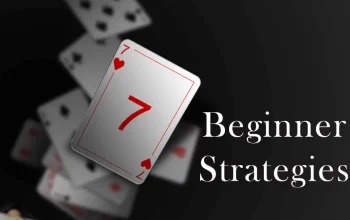For centuries, rummy has been a game of intuition, of reading opponents, of that gut feeling telling you to hold onto a card just one more turn. It felt human, you know? Unquantifiable. Well, the game is changing. Literally. We’re now at a fascinating crossroads where artificial intelligence is not just a tool for chess or Go, but is actively reshaping how we understand and develop strategy in rummy.
Let’s dive in.
From Gut Feeling to Data-Driven Decisions
Think of a master rummy player. Their skill comes from thousands of hours of play, building a mental library of patterns and probabilities. AI does something similar, but on a scale that’s, frankly, superhuman. It can play millions of simulated games in the time it takes you to shuffle the deck.
This brute-force computation allows AI to move beyond simple rules of thumb. Instead of “always discard high-point cards early,” an AI can develop a nuanced understanding of context. It calculates the exact probability that a specific card will complete a run or set, not just for itself, but for every other player at the table based on their discards and picks. That’s a game-changer.
How AI “Learns” Rummy
It’s not magic, it’s machine learning. Most advanced rummy AIs use a technique called Reinforcement Learning (RL). Here’s the deal: the AI starts as a complete novice, making random moves.
- Trial and Error: It plays game after game after game.
- Reward System: It gets a “reward” for good outcomes (winning a hand, minimizing points at the end of a round) and a “penalty” for bad ones.
- Strategy Evolution: Over countless iterations, it begins to associate certain actions in specific game states with positive outcomes. It learns, for instance, that holding onto a seemingly useless card in the early game can dramatically increase its chances of a late-game sequence.
The result is a strategy that isn’t programmed, but discovered.
Unveiling the Hidden Math of the Game
One of the most significant impacts of AI in rummy strategy development is its ability to validate or debunk long-held beliefs. Humans are great at creating narratives—”I lost because I didn’t drop that queen.” But was that really the reason? AI cuts through the anecdotal noise.
For example, an AI might reveal that in a specific 2-player game state, the optimal move is to break a pure sequence early to pursue a higher probability meld. This goes against every fiber of a traditional rummy player’s being! But the data doesn’t lie. It’s found a path to victory that human heuristics had overlooked.
| Traditional Wisdom | AI-Driven Insight |
| Always form a pure sequence first. | While generally sound, there are calculable scenarios where delaying a pure sequence to block an opponent yields a higher win rate. |
| Discard high-point cards asap. | Context is king. Sometimes holding a high card for a turn or two significantly reduces the chance of giving an opponent a crucial meld, which is more valuable than the immediate point saving. |
| Bluffing is purely psychological. | AI can identify optimal bluffing patterns based on discard history, turning an art into a calculable risk. |
AI as Your Personal Rummy Coach
This isn’t just about creating unbeatable bots. The real-world application for players like you and me is incredible. Imagine a training tool that analyzes your play history and says:
- “You tend to under-value the 5 of hearts in the mid-game. Holding it increases your win probability by 12%.”
- “Your discards in the first five turns are statistically making it easy for observant opponents to guess your hand.”
- “In this specific situation you encountered last game, the optimal move was ‘X’, not ‘Y’.”
This moves learning from passive absorption to active, targeted feedback. It’s the difference between practicing a sport alone and having a world-class coach pointing out the subtle flaw in your stance.
The Human Element Isn’t Dead… It’s Evolving
Okay, so does this mean the human touch is obsolete? Hardly. In fact, the intersection of AI and rummy strategy is creating a new kind of player—the “centaur” player, a term borrowed from chess, where a human and AI collaborate.
The AI handles the brute-force probability calculations and pattern recognition. The human provides the psychological warfare, the adaptability, and the understanding of human unpredictability. You use the AI-derived strategy as your foundation, your rock-solid baseline. Then, you layer on top the art of the bluff, the intentional misdirection, the reading of an opponent’s “tells” that no algorithm could ever comprehend.
Your opponent isn’t just playing against you anymore. They’re playing against the distilled knowledge of millions of games, filtered through your own creative mind. That’s a powerful combination.
The Future Deck: What’s Next?
The work is far from over. The next frontier is developing AI that doesn’t just play an optimal, static game, but one that adapts in real-time to specific human opponents. An AI that learns your personal tendencies, your biases, your unique style of play, and then adjusts its entire strategy to counter you specifically.
Honestly, it’s a little terrifying and utterly thrilling. We’re also seeing the rise of AI-powered tools for analyzing professional matches, providing commentators and viewers with deep, real-time strategic insights that were previously impossible.
The classic card table, with its felt surface and worn deck, is now also a digital laboratory. AI hasn’t solved rummy; it has, in fact, made it more complex and interesting than ever. It’s shown us that beneath the shuffle and the deal lies a deep, mathematical beauty we’re only just beginning to appreciate. The game you thought you knew has hidden depths, and we now have a powerful new light to explore them with.



